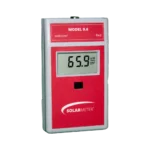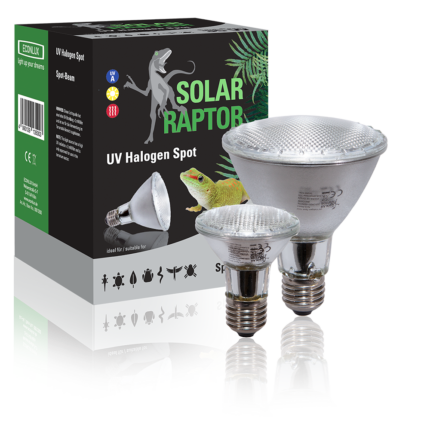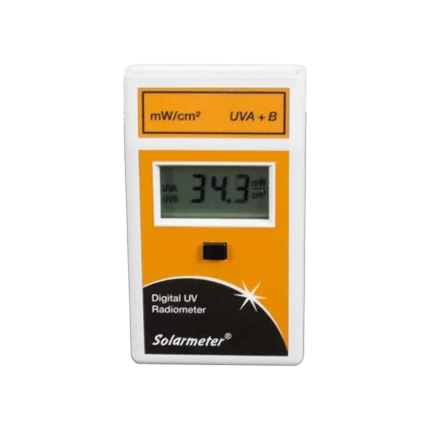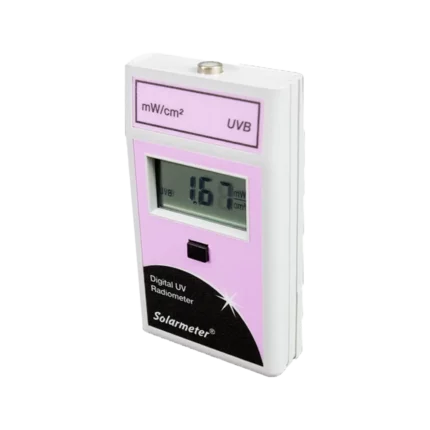Beschreibung
- Überwachung der Intensität und Alterung von roten Leuchtstofflampen
- Überwachung der Intensität und Alterung von Rotlicht / LED
- Überwachung der Intensität und Alterung von roten HID-Lampen
- Überwachung der Intensität und Alterung von Kollagenstimulationslampen
- Überwachung der Intensität und Alterung von Wundheilungslampen
- Messung von rotem Licht im Freien
- Messung des photosynthetischen Aktionsspektrums Rotband
| Modell: | 9.6 |
| Ausgabebereich: | 0-199.9 mW/cm² |
| Messbereich bei 633 nm: | 97% |
| Bandbreite: | 577-661 nm |
| Auflösung: | 0.1 mW/cm² |
| Umrechnungsgeschwindigkeit: | 3,0 Anzeige/Sek. |
| Display: | 3,5-stelliges LCD |
| Zifferngröße: | 10,2 mm hoch |
| Betriebstemperatur: | 0°C – 37,8°C |
| Betriebsluftfeuchtigkeit: | 5% – 90% |
| Genauigkeit: | ±10% REF.NIST |
| Abmessungen: | L: 61 x B: 22 x H: 108 mm |
| Gewicht: | 150 g |
| Betriebsspannung: | 9 V (Blockbatterie) |
| Linse: | Glas |
| Diffusor: | Teflon |
| Sensor: | GaAsP Photodiode mit Filter |

Sensor:
GaAsP-Photodiode, verpackt in hermetisch versiegelter Glasfensterkappe. Filter zur Verengung der Bandbreite, wie im Diagramm der spektralen Empfindlichkeit dargestellt.
Betrieb des Messgeräts:
Um Ihr Solarmeter® zu bedienen, richten Sie das Sensorfenster auf der Oberseite des Messgeräts direkt auf eine Quelle. Drücken und halten Sie den Druckschalter auf der Vorderseite des Messgeräts. Für optimale Ergebnisse notieren Sie sich den Abstand der Messung zur Quelle, um wiederholbare Ergebnisse zu gewährleisten.
Die Batteriebetriebsspannung ist von 9 V bis hinunter zu 6,5 V einstellbar. Unterhalb von 6,5 V beginnen die Zahlen auf der LCD-Anzeige zu schwinden, was auf die Notwendigkeit eines Batteriewechsels hinweist. Bei typischer Betriebsbelastung hält eine Standard-9V-Batterie ca. 2 Jahre.
Richtige Verwendung des Solarmeter®:
- Tragen Sie bei der Überprüfung der UV-Lampen einen Augenschutz (ideal sind Brillen, die einen Rundumschutz bieten)
- Lassen Sie die Lampen aufwärmen, bevor Sie Messungen vornehmen (mindestens 15 Minuten).
- Halten Sie den integrierten Sensor des Messgeräts nahe an die Quelle, um die Intensität einzelner Lampen oder LEDs zu messen. Halten Sie den Sensor in Arbeitsabstand von der Quelle, um die effektive Intensität zu messen.
- Halten Sie bei der Überprüfung der Lampenalterung den Messabstand und die Messorte gleich.
- Lampen sollten ausgetauscht werden, wenn die Leistung auf etwa 70 % ihrer ursprünglichen (neuen) Messwerte abfällt.
- Wenn Sie sich nicht sicher sind, was die neuen Werte waren, ersetzen Sie eine Lampe durch eine neue und vergleichen Sie die alten Werte.
Pflege und Wartung:
- Setzen Sie das Messgerät keinen extremen Temperaturen, Feuchtigkeit, Stößen oder Staub aus. Wenn das Messgerät versehentlich extremer Luftfeuchtigkeit oder feuchten Bedingungen ausgesetzt wird, können ungewöhnlich hohe Messwerte auftreten. Wenn Sie das Messgerät auf natürliche Weise trocknen lassen oder es in einen Beutel mit Silikat stecken, wird die normale Funktion wiederhergestellt.
- Verwenden Sie ein sehr weiches Tuch, um das Messgerät zu reinigen. Halten Sie den Sensor frei von Öl, Schmutz, usw.





























